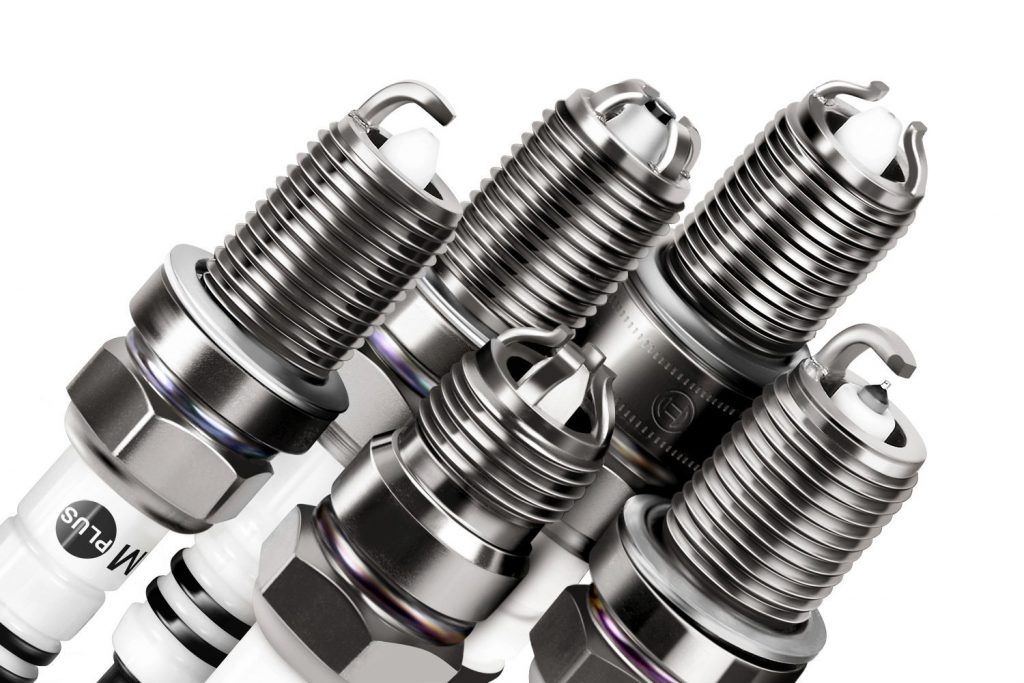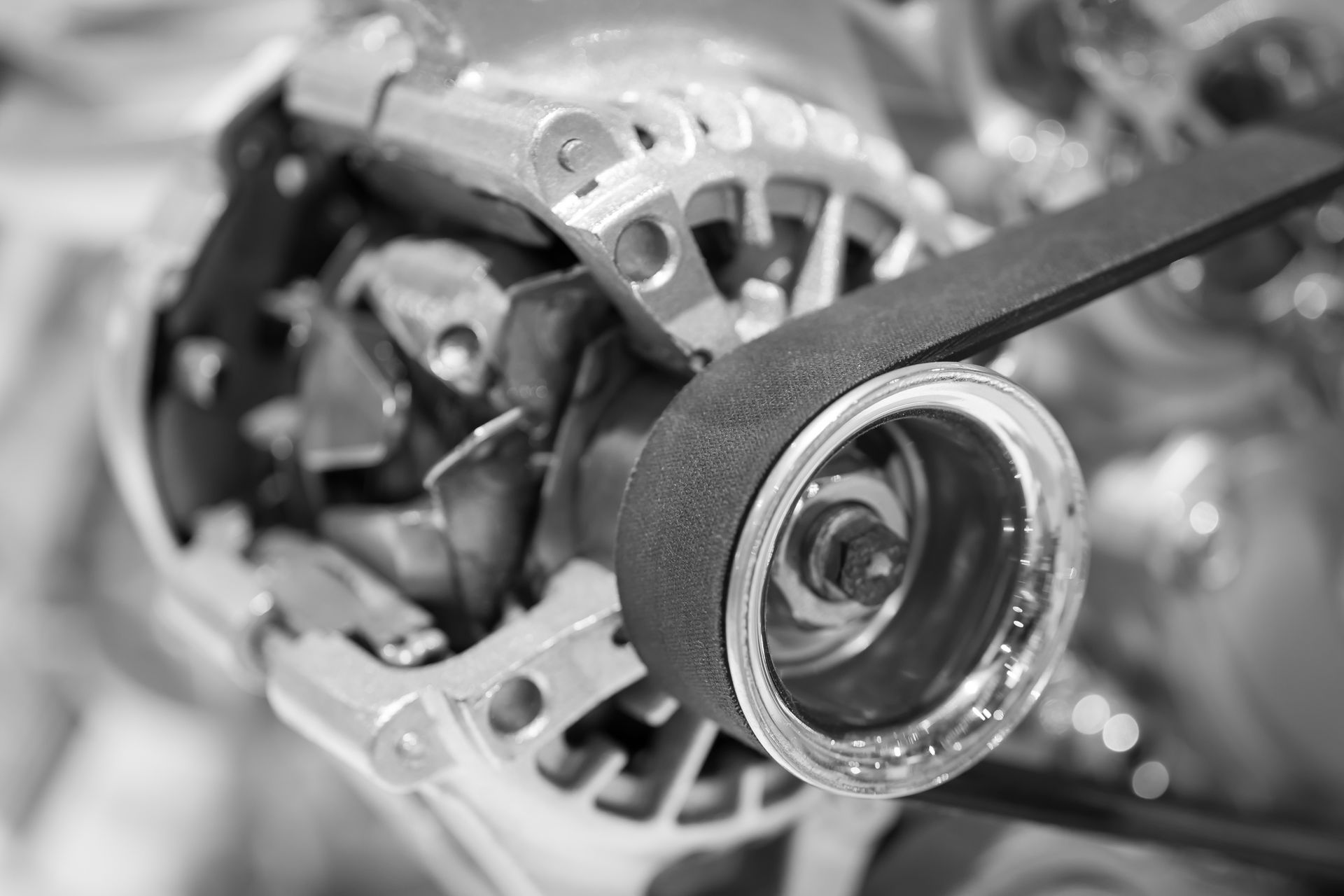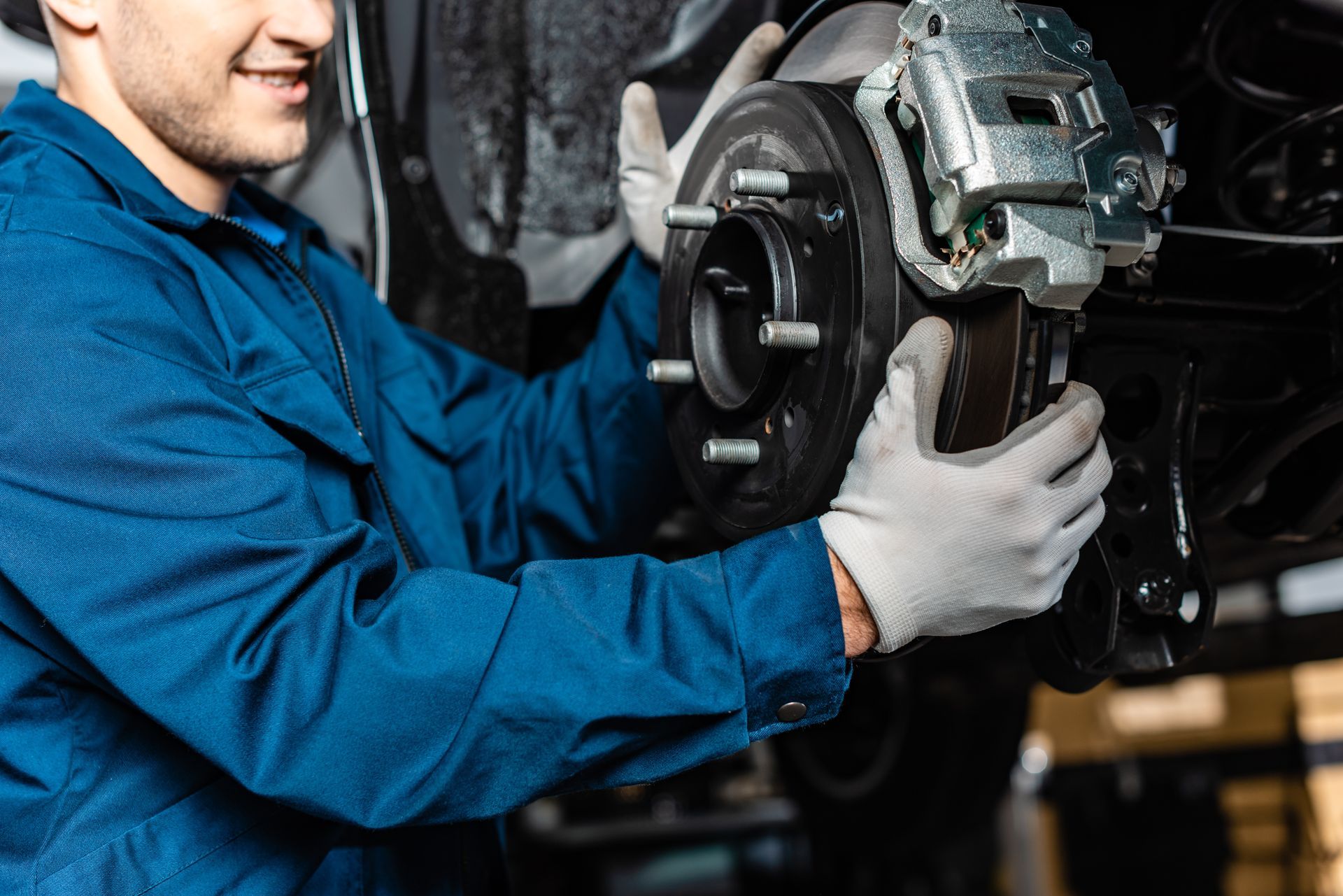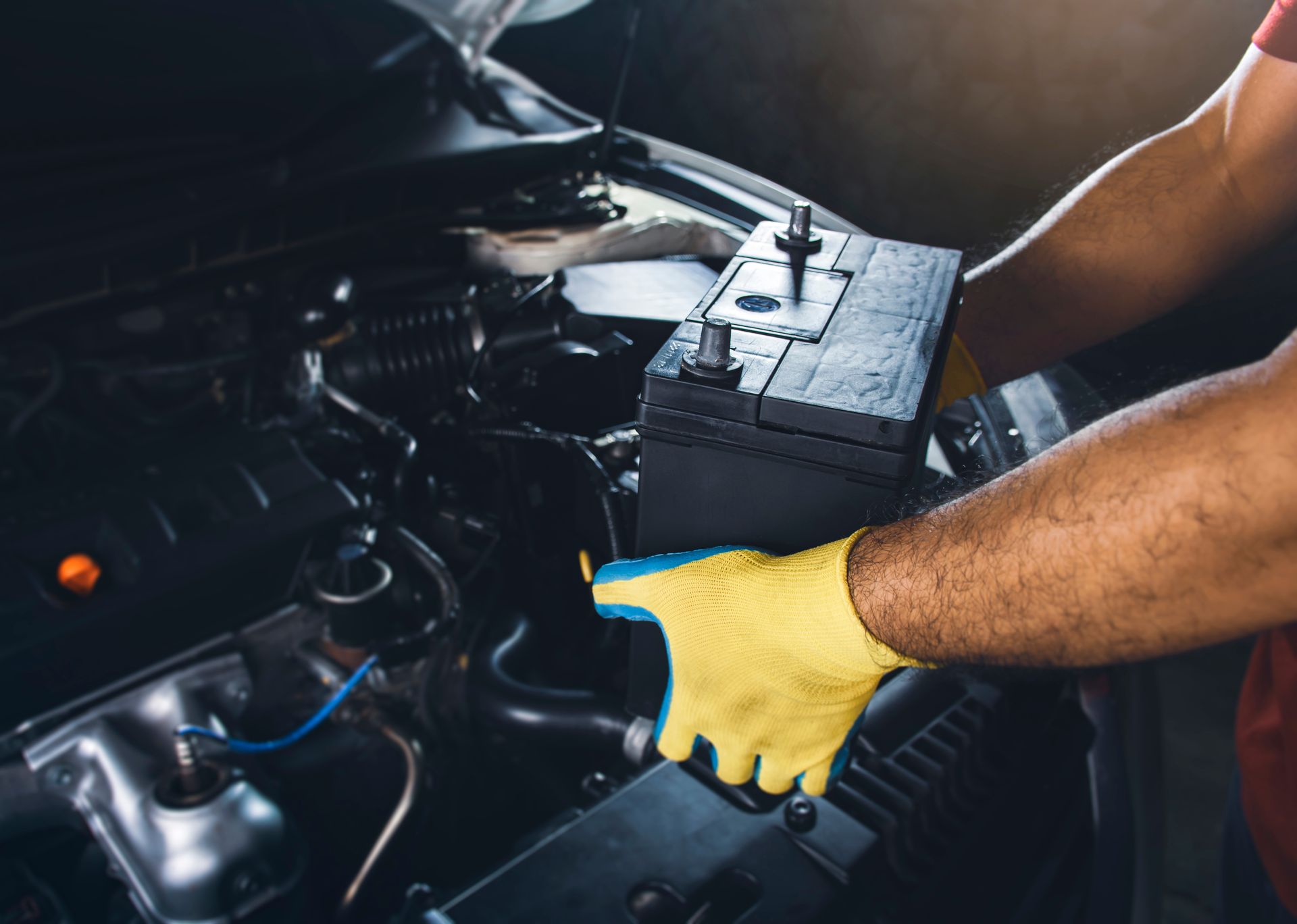Everything You Need To Know About Spark Plugs
The job of your spark plugs
Spark plugs have a very simple yet essential job. They provide the spark necessary to ignite gasoline in the combustion chamber. Without working spark plugs, your engine will not run (there will be nothing to ignite the fuel and start the combustion process). Your car’s engine basically runs on a series of miniature, contained explosions. First, air and fuel are mixed in each cylinder. When the piston rises toward the top of the cylinder, the spark plug fires. Electricity arcs from the electrode to the tab, and the fuel and air mixture ignites. This creates pressure as the fuel is transformed into a gas (emissions), which pushes the piston back down and turns the engine. This cycle is repeated over and over again in each cylinder of your car.

The engine has one spark plug per cylinder. Each spark plug is connected to a spark plug wire (in conventional and electronic ignitions). The wire runs from the top of the plug to the distributor, which is attached to the coil. However, if you have a distributor-less ignition, you have no spark plug wires. Rather, coil packs are used and the whole system is controlled by the computer. Over time, your spark plugs wear. This is completely normal. Eventually, they will need to be replaced. The primary form of wear is to the electrode – as the spark plug arcs, it loses tiny amounts of electrode material. Eventually, it shortens. When it becomes too short, it won’t arc properly and the engine will misfire.
The “100,000 Mile” Tune Up
In the early 1990s, a major car company began advertising “100,000-mile” tune ups. Was it real? Yes, it was because of the DIS ignition technology and the spark plugs we developed for them. This was the advent of double platinum spark plugs from Autolite. They really did last 100,000 miles with little to no gap growth. This was heavily advertised by the automaker to the point of convincing consumers that all cars have a 100,000-mile spark plug change interval. This has really caused a shift in spark plug replacement recommendations by repair shops. We have gone from recommending spark plug replacements at the OE change intervals to not changing them at all until the car is running poorly.
Now that you know the purpose of spark plugs, find out what happens when they are not replaced as recommended.
What happens when a spark plug is left in the engine beyond its service life? I will use the mid-2000 model year Dodge trucks as an example, as this is what I frequently saw in my shop, usually towed in. As you know, these engines are dual plug with DIS ignition (later models used iridium spark plugs). They have a 32,000-mile change interval because early versions used copper core spark plugs. Many owners are under the misconception that they have a 100,000-mile change interval. As the spark plug gap opens up from wear due to arc erosion, the voltage required to fire the spark plug goes up. When it exceeds the coils ability to supply the required voltage, misfires occur. We would see these trucks driven pretty much until they quit running or ran so poor the owners had to bring them in. It always hurts when you have to explain that if they brought in the truck for a routine plug change at the required interval, all that would have been required was a simple plug change. In fact, they could have been upgraded to Autolite Iridium XP spark plugs and then could go 100,000 miles between changes. In the worst cases on these trucks, they suffered coil failures, converter failures and more, driving the repair bill to nearly $2,000 all because of simply ignoring the OE manufacturer’s spark plug change interval.
Change Intervals
The average age of a car on the road is now 11.6 years. That means the majority of your customers cars are either due for a spark plug change or actually way overdue. I recently ran into a guy with a 2007 Toyota 4Runner that had 172,000 miles and still had the OE spark plugs. He said it ran fine, but upon further questioning, it was starting hard and his fuel economy had dropped off. Take a look at this chart of 2007 model cars and you can see that many have change intervals far less than 100,000 miles. Why are they less than 100,000 miles? You can go all the way back to the early 1990s and find vehicles that do have 100,000-mile change intervals. There are many reasons. Some OE’s decided to use copper core spark plugs to save cost. Others feel best performance is preserved by changing spark plugs at 60,000 intervals. This is especially prevalent on small engines with high output or even larger engines that are supercharged or turbocharged.
Spark Plug Types And Service Life
Let’s take a look at the different spark plug types and how long they can last. Copper core spark plugs have been around for a very long time and are still used in some vehicles made 11 years ago. In fact, we as technicians and many DIYers are still installing copper core spark plugs in vehicles where they are not original equipment. Why? It seems that with many, cost is an issue. Copper core spark plugs are very inexpensive, but it’s never a good idea to replace a double platinum or iridium spark plug with a copper core spark plug. If you replace double platinum or iridium spark plugs with copper, you will usually end up with a dissatisfied customer. Copper core spark plugs typically have a maximum life of 32,000 miles. If your customer’s original double platinum or iridium spark plugs lasted 100,000 miles and you replace them with copper, imagine his/her dissatisfaction when they need to be replaced again at 32,000 miles. Next up is the single platinum spark plug. This is the same as a copper core plug with a platinum ball welded to the center electrode. Installing a single platinum plug in place of a copper core spark plug will result in a 50-60,000 mile service life, a nice upgrade for your customer. From here we go to the double platinum spark plug. GM was the first company to release vehicles with a DIS or Waste Spark ignition. Ford quickly followed. These ignitions offered improved performance, but were really tough on spark plugs due to the reverse firing nature of half of the spark plugs. The answer was double platinum spark plugs, which have a platinum ball welded to both the center and side electrodes. This provides excellent durability with very little gap growth up to 100,000 miles. Vehicles with DIS ignitions should always have plugs replaced with double platinum spark plugs.
State Of The Art
In the last 10 years, coil on plug ignitions have become pretty much standard on most vehicles. This ignition has many advantages. The OE can precisely control ignition timing events for each cylinder, managing the engine for maximum performance, fuel economy and emissions. The ignition coils are much smaller and many have outputs far below the old school large coils. This led to the development of what are called “fine wire” spark plugs. The center electrode is made very small in diameter compared to conventional spark plugs. This tiny center wire requires far less voltage to fire, making the small coils efficient. The tiny center wires require a different metallurgy to remain robust and durable. That is where iridium alloy spark plugs come in. By making the center wire from some pretty exotic materials like iridium and rhodium, the spark plug center wires can be made as small as .6mm and still have up to 120,000-mile durability. Autolite also adds a platinum button on the side wire of its iridium spark plugs, so they may be used in DIS ignitions.
Rule Of Thumb – Always Ok To Upgrade, Not Ok To Downgrade!
If you look at the chart above, it is always a nice upgrade for your customers to replace copper core, single platinum or double platinum spark plugs with Autolite XP Iridium spark plugs. Yes, they cost a little more, but last a lot longer and offer improved engine performance and emissions. Just like we look out for our customers by recommending oil changes and other maintenance when needed, do your customers a favor and recommend a spark plug change when the OE service interval comes around, and always use the same or better spark plug metallurgy for best results.
Loading ...
Missing business hours data / Error occurred while getting the data.
Our Location
Have Trouble Finding Us?
Loading ...
Missing nap lines data / Error occured while getting the data.










